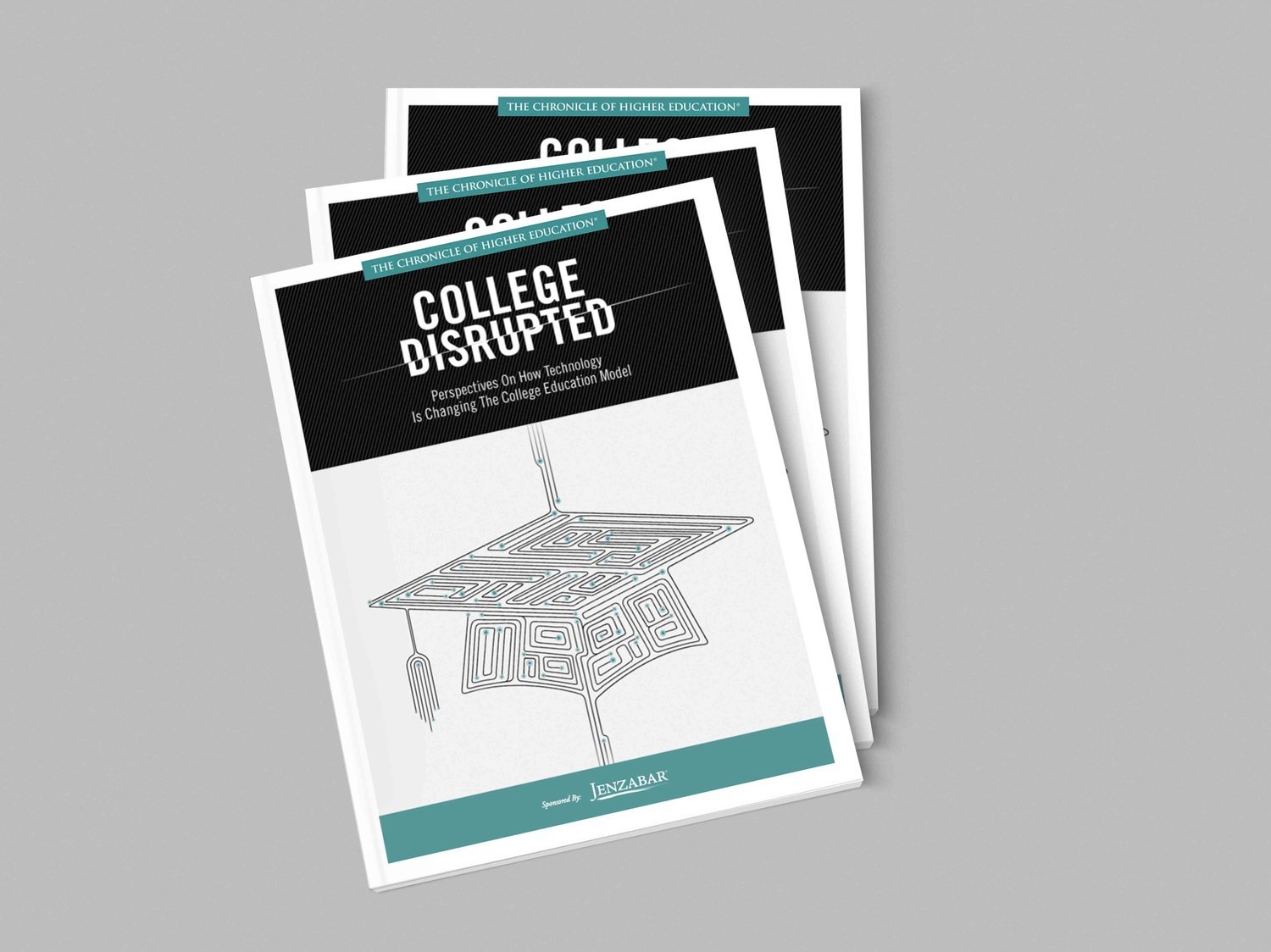College Disrupted 2015 Booklet
A collection of The Chronicle’s reports and guides in a compact format, focusing on vital topics and actionable insights aimed at addressing the challenges and needs of higher education institutions.

Client: The Chronicle of Higher Education
Industry: Higher Education
Role: Graphic Designer
Agency: [If applicable]
Year: 2015
Tools: Adobe InDesign, Illustrator, Photoshop
The Project
In 2015, The Chronicle of Higher Education tasked us with designing a comprehensive booklet, College Disrupted, which would delve into how technology was reshaping the higher education landscape. The booklet was intended to showcase key insights, trends, and challenges impacting colleges and universities, with a focus on how institutions could adapt to the rapid advancements in digital learning, online education, and the integration of new technologies.
The goal of the booklet was to present actionable insights for higher education leaders, administrators, and educators, offering them a perspective on how technology could disrupt traditional college models. As the graphic designer on the project, my role was to take these complex ideas and transform them into a visually compelling, easy-to-read format that communicated both the urgency and the potential of these educational shifts.
Key Challenges
Complex Subject Matter: The topic of how technology was disrupting higher education involved abstract concepts and complex data, making it challenging to present in a digestible format.
Visual Cohesion: The content needed to be engaging and informative, but also aesthetically cohesive, reflecting The Chronicle’s established style while offering something fresh for readers.
Compact Format: As the booklet was designed to be a compact guide, balancing concise, valuable content with visually effective design was a key challenge.
Design Strategy & Execution
1. Content Structuring and Layout
The first step in the design process was collaborating with the editorial team to structure the content. The booklet needed to flow logically, with each section building on the previous one, offering both high-level insights and in-depth analysis.
Section Dividers: Each key topic was separated with bold, visually distinct section dividers that used photography and color to make transitions clear and engaging.
Typographic Hierarchy: I implemented a clean and simple typographic hierarchy to ensure easy readability. Headings and subheadings were emphasized using varying font sizes and bold weights to guide the reader’s eye through the content.
2. Visualizing Data
Given the nature of the subject matter, the booklet was filled with data, case studies, and research findings. My task was to convert these into visually digestible pieces.
Infographics & Icons: I created custom infographics to distill complex data into clear, visual representations. Icons were used sparingly to highlight key facts, making the content both engaging and informative.
Charts & Graphs: Where applicable, I designed clean, minimalistic charts and graphs that directly corresponded with the text, ensuring the data complemented the narrative and helped tell the story of the disruption technology was causing in higher education.
Results & Impact
Increased Engagement: The College Disrupted booklet was praised for its engaging design and how it effectively conveyed complex ideas about the future of higher education. Readers found it easy to navigate and insightful, thanks to the clear layout and well-structured content.
Actionable Insights for Educators: The booklet successfully offered actionable recommendations for higher education institutions, helping them understand the challenges posed by technology and how to stay ahead of the curve in an evolving landscape.
Brand Reinforcement: By staying true to The Chronicle’s established design language while enhancing it with fresh visuals and modern design elements, the booklet further solidified The Chronicle’s reputation as a leading voice in higher education reporting.
Key Takeaways
Designing for Complex Topics: Tackling complex, data-heavy subjects requires breaking down the information into digestible visual formats like infographics, charts, and iconography to make it accessible to a wide range of readers.
Brand Consistency with Innovation: While adhering to the established brand guidelines is crucial, it’s also important to push the design boundaries to make the publication stand out and engage the reader.
Compact Format Design: Designing a booklet in a compact format challenges you to be efficient with space. Every element—typography, imagery, and layout—needs to be carefully considered to ensure clarity without overcrowding the page.



